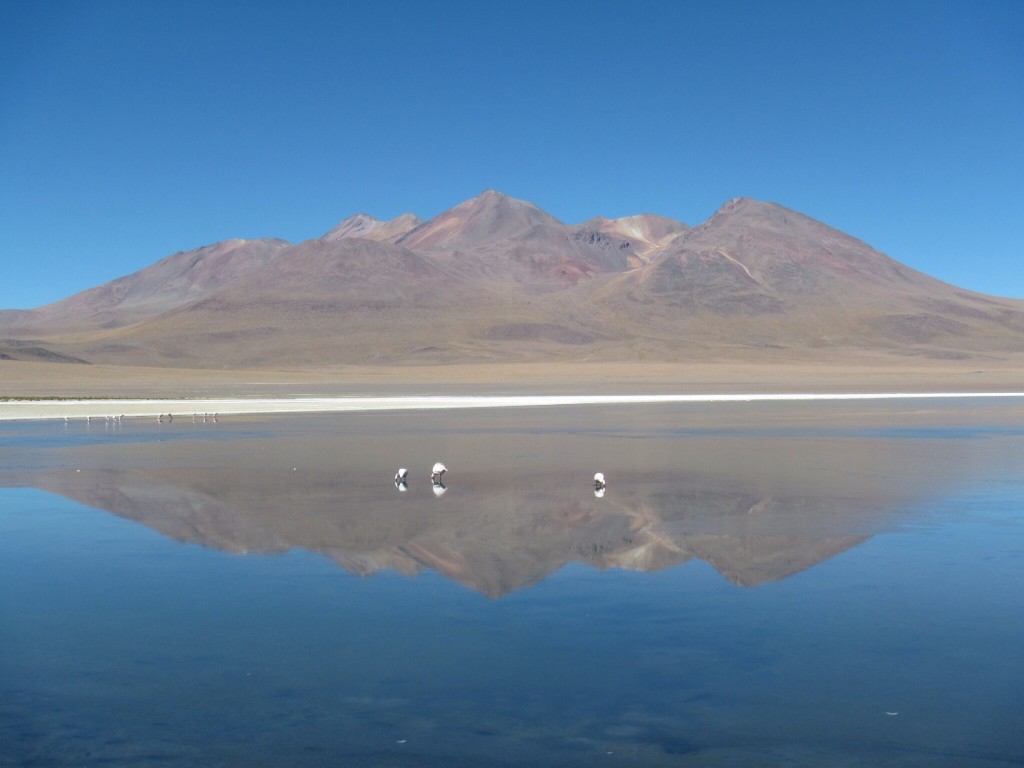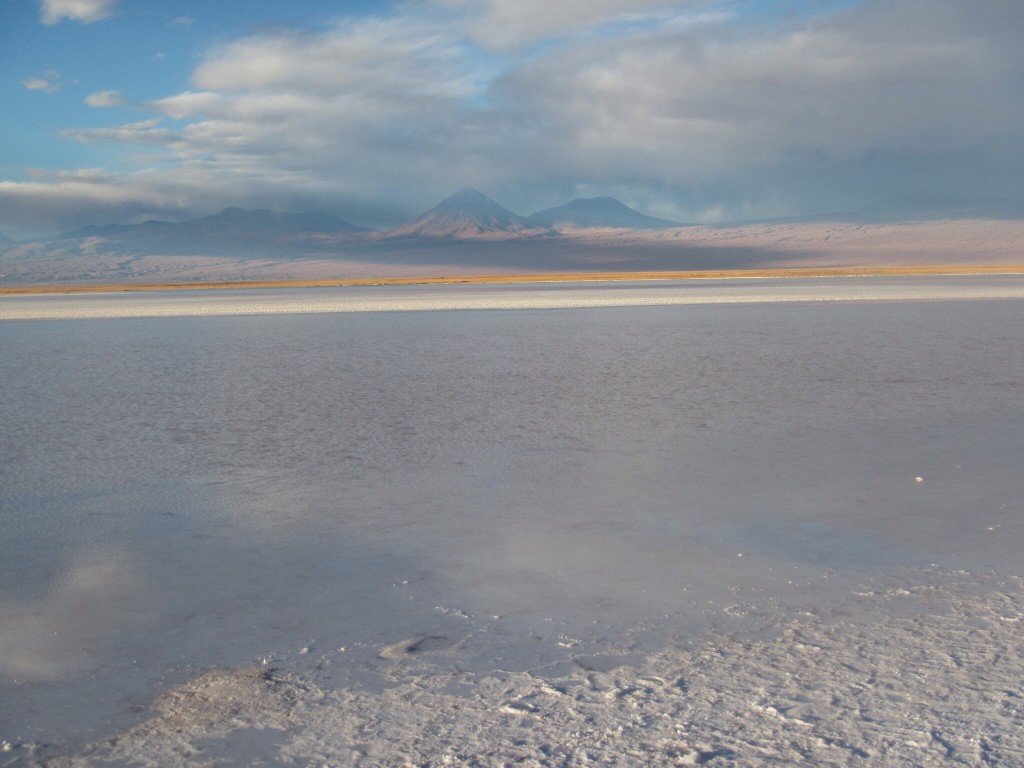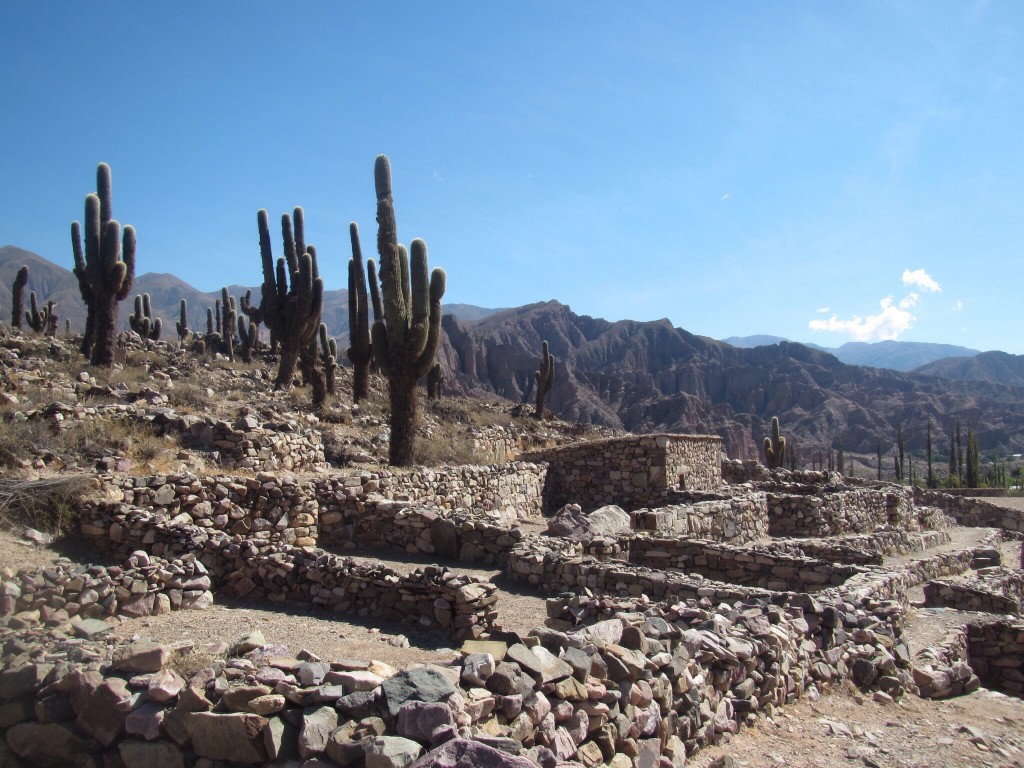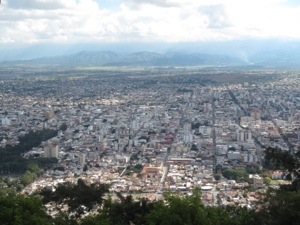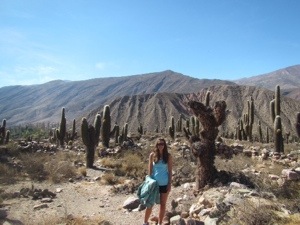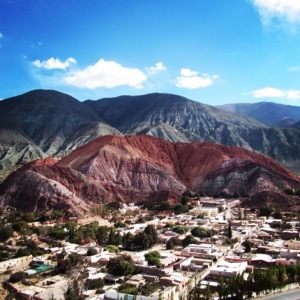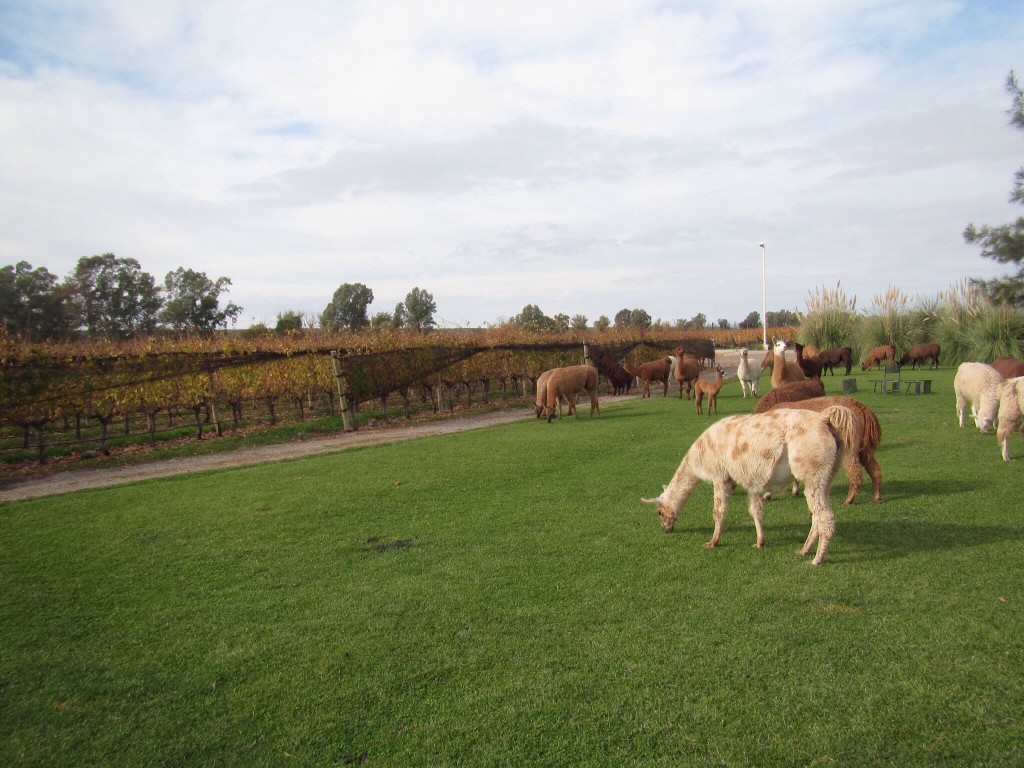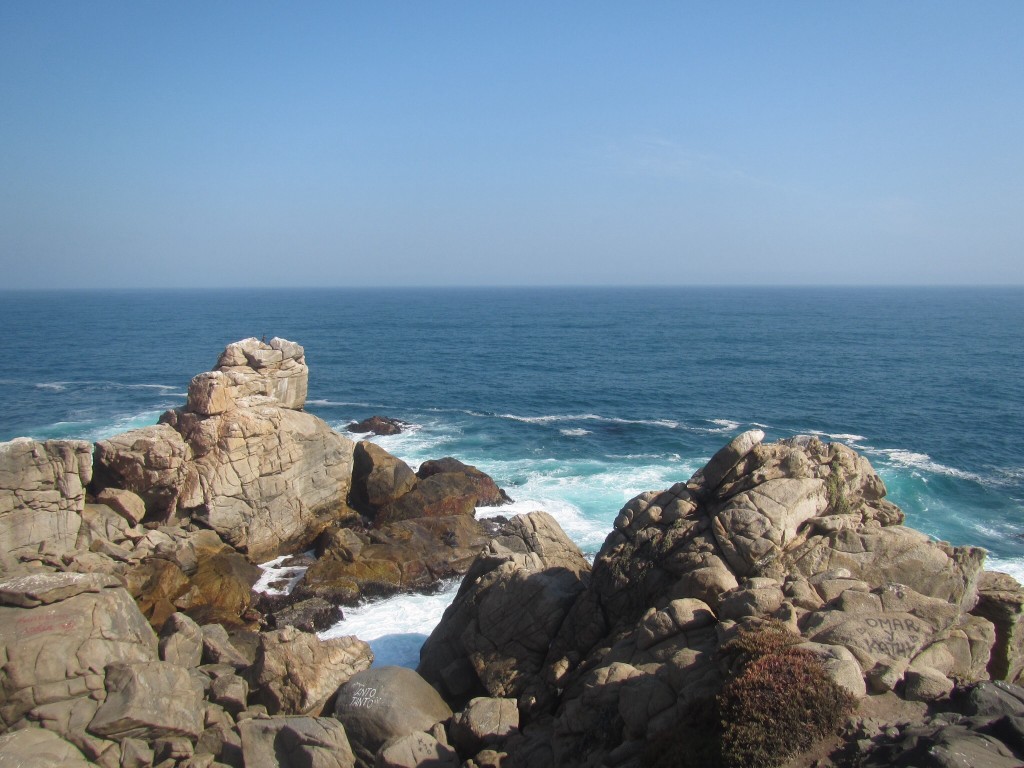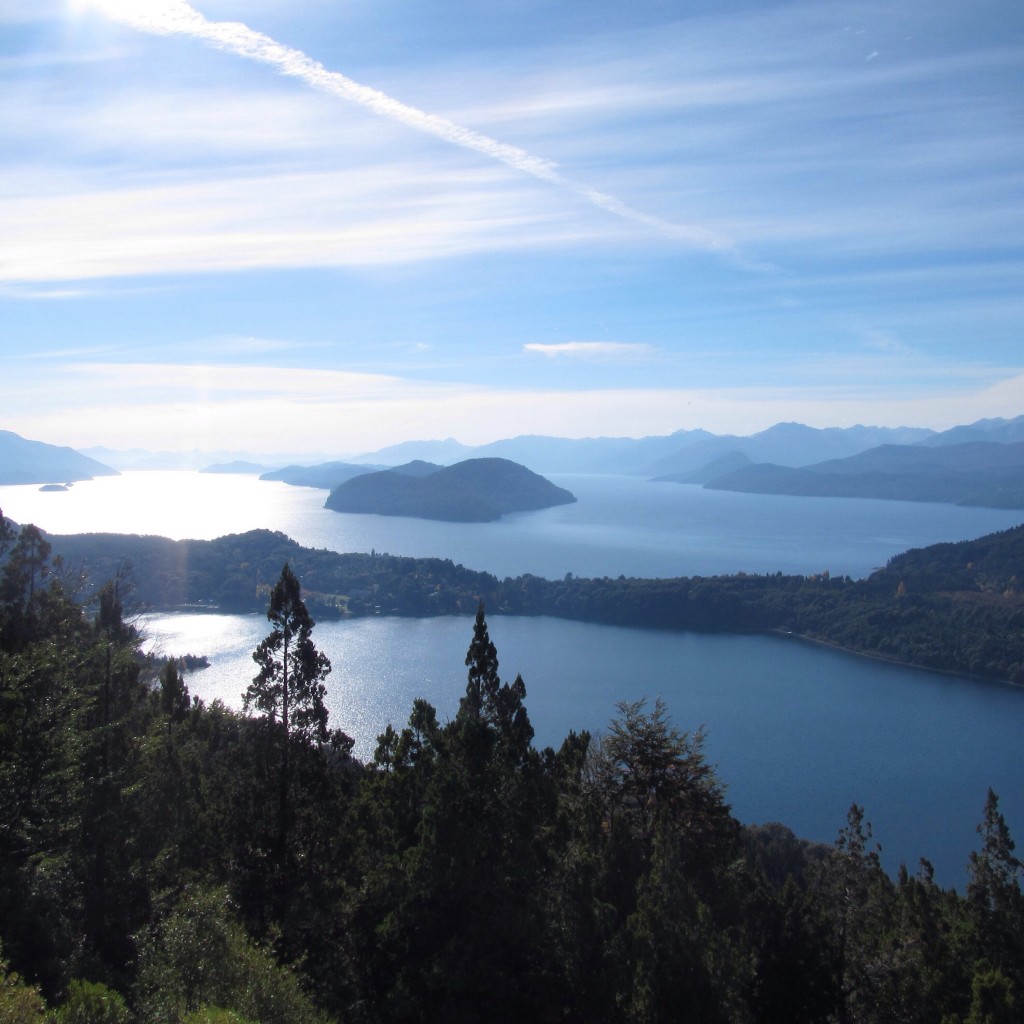After all of the horror stories that Ryan and I had read about the salt flats tour, we were pretty anxious when our time came to head there. The day began with a hostel pickup in San Pedro de Atacama, and after our van was full, we went to the Chilean exit point, which turned out to be around the corner from where our hostel was. We received our Chilean exit stamp, and then made our way about 45 minutes out of town to the Bolivian border, which was really just a house in the middle of the desert that said “Bolivia” on it. While receiving my entry stamp into Bolivia, I asked if there was a bathroom that I could use, and with a chuckle, the Bolivian border agent told me no, there was no bathroom there. Welcome to Bolivia! [Read more…] about From the Atacama desert to Uyuni
Roughing it in San Pedro de Atacama
Our bus ride from JuJuy to San Pedro de Atacama proved to be one of the most beautiful, and one of the most unpleasant we’ve had so far. The bus made it’s way past Purmamarca, where we had spent our previous day, and high up into the mountains to cross the Andes. We had amazing views of the mountains and the surrounding valleys; however, the border crossing into Chile was at an alarming height of over 4,000m above sea level. [Read more…] about Roughing it in San Pedro de Atacama
Salta & JuJuy
After 18 hours on an overnight bus from Mendoza, we began our descent into a valley where Salta sprawled out in front of us. The city is located in a valley amongst lush mountains, and without any sky scrapers or tall, distinctive buildings, it was possible to see the entirety of the city as we made our way down into the valley. As we drove into Salta, I began to feel the proximity to Bolivia in the buildings, the infrastructure, and the look of the people. I felt as though I had left Argentina, and was back in Colombia or Ecuador. On the up side of this, the climate improved substantially, and I was able to pull my shorts out of the darkest cubby of my backpack for the first time in nearly a month.
Upon arriving in Salta, we made our way to our hostel to get settled. After checking in, we ran into a guy that we had met at our very first hostel in Bogota, and later coincidentally met up with in Quito. It was interesting to exchange stories from the last 3 months when we had been on completely different routes. From there, we headed out to see the town. My first impressions were nothing fabulous. The buildings were fairly run down, and there was more traffic than I had expected from this small scale city. We later learned that the north takes a siesta from about 3-6pm, and this may have influenced our initial opinions of the city. After debating back and forth about what we wanted to do, we decided to stay in Salta for 2 nights, Jujuy for 2 nights, and then catch a bus to San Pedro de Atacama from there.
The following day, we had a leisurely morning and then set out to explore the town. We visited the main plaza, as well as stopped by the famous San Francisco church (which was unfortunately being refurbished), and then headed up the Cerro San Bernardo, which gave us a view of the entire city. The top of the mountain was an oasis with a huge expanse of greenery and a waterfall. The view was nice, but nothing spectacular, so we headed back down the zig zagging steps to grab lunch at a Trip Advisor recommended vegetarian restaurant that certainly did not disappoint. Hopefully I got enough nutrients in this meal to make up for the crappy eating that is inevitable on an overnight bus! Later in the evening, we had a spanish lesson at one of Salta’s many language schools, and I have to admit, it felt to good to do something productive after our playing tourist since leaving BA. Following our spanish lesson, we had dinner consisting of the local dishes locro (a type of bean soup) and a humita (similar to a tamale, but only with corn and cheese). Of course, we washed it all down with some Argentinian Malbec before calling it a night.
After checking out of our hostel, we headed to the bus station to catch a bus 2 hours north to the city of San Salvador de JuJuy (pronounced who who-ee), the largest city in the province of JuJuy. We arrived at the new bus station, and I was immediately pleased with our choice to leave Salta. Once again, we checked into our hostel and got settled before heading out to see the town. We were staying a few blocks away from a popular pedestrian street that leads to the main square. We explored that a bit before enjoying a big lunch at another Trip Advisor recommended vegetarian restaurant called Madre Tierra. By the time we had finished lunch, the city had shut down for the afternoon siesta, and we decided to do the same, taking the next few hours for a little R&R. We ventured back out around 6:30pm, and the city was bustling once more. It seemed as though the entire city of JuJuy was out on the streets, drinking coffee, wine, shopping, and socializing. Dinner isn’t until much later in Argentina, so we killed time by visiting the Cultural Center, exploring the mall, poking our head into little shops, and just generally wandering the streets. We finished off the evening with a delicious dinner, and Ryan finally tried Argentinian steak. Although I’m not a steak fan, he seemed pretty pleased with the steak and Malbec combination!
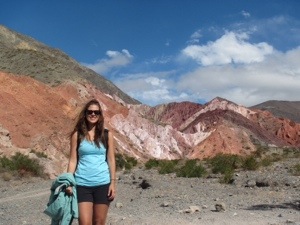
We got up early the next morning and walked over to the local bus station in JuJuy, where, unlike the new terminal, we found all the locals. The bus station was surrounded by fruit and vegetable stands, as well as locals selling all sorts of goods and food. We had wanted to purchase a bus ticket to the tiny town of Purmamarca an hour and a half away, but they didn’t have any until the afternoon, so we ended up with a ticket to the town of Tilcara. The bus ride took about 2 hours, dropping us in the middle of the dusty little town of about 5,000 people. After checking the bus schedule to Purmamarca, we determined that we would have to get there another way. While wandering the Main Street debating what to do, we came across a tour company, who was able to arrange a transfer for us for later that afternoon. With all of that settled, we set out to explore. Although the town is tiny, there are ruins called Picara about 1 km out of the town that we decided to visit. Picara has been refurbished since it was first discovered, but it was a cool area to explore. The houses were incredibly tiny, made out of rocks and dead cactus, and I could barely fit through the doorways. I think the best part about Picara was the giant cactuses scattered throughout the ruins. I have never seen a cactus up close, so it was pretty cool to stand beside them and see how big they area. On top of that, Picara has a pretty incredibly backdrop, with colored mountains surrounding the area, and the river valley running all the way to JuJuy. It would be hard to deny the the beauty of this desert landscape.
When we had finished at Picara, we set off to find some food and explore the rest of the town. We visited the Archaeologic Museum, which hosts artifacts from Picara, as well as the church and the main square. By this point, the town was closing for the siesta, so we headed back to the tourist office to pick up our transfer. The drive to Pumamarca was only about 30 minutes, and was incredibly scenic. Arriving in this tiny town of only 500 people, we were surprised to catch the end of a running race, and after getting our bearings, we set off to hike around the famous Cerro de los Siete Colores (Hill of Seven Colours). The sky was blue, the sun was shining, and the magnificent red clay of the mountain stretched up to the left of us. It truly felt like the perfect afternoon, and I was feeling pretty grateful for having this amazing experience. As we made our way around the backside of the mounttain, we were able to see the other mountains in the area of deep greens, purples, and some mixing together to make rainbow mountains. It was pretty outer worldly to say the least. We walked for an hour before reaching the town again, and from there we crossed the neighboring river and headed up the opposite mountain to get a good view of the famous colored hill that we had just walked around. To say it was beautiful would be an understatement. The shades ranged from purples, to pinks, to reds, to bluish hues, to green. We made it to the top of the view point, snapped a few photos, and enjoyed the view until it was so windy that we thought we might blow off! We made it just in time for the next bus back to JuJuy, where we both passed out from the exhaustion of the day.
Over dinner, we reflected how it had been a while since we had had a super adventurous day where we don’t have a guide or a plan, and it felt good to just go with the flow and figure it out as we went. We also reflected on how we had had the most perfect last day in Argentina. Unfortunately, the border to Chile is over 4,200 m over sea level so we cheers-ed our time in Argentina with water instead of the requisite red wine. It’s okay though… I’ve most definitely left a piece of my heart in Argentina, and I know I will be back someday!
Mendoza: Wine, wine… and more wine!
After a wonderful week in Santiago, filled with incredible hospitality and an at-our-sides tour guide, we were ready to be back on our own. I hadn’t really realized how much of a routine Ryan and I have gotten into on the road, and although it’s nice to switch that up once in a while, it’s also comforting to get back to that. [Read more…] about Mendoza: Wine, wine… and more wine!
Exploring Santiago, Valparaiso & Isla Negra
Santiago is the capital of Chile, home to over 6 million people. The city is nestled in a valley between the Andes mountains, and the surrounding hills dipping towards the west coast. Fortunately, my grandpa’s cousin (on my mom’s side), Karin, lives in Santiago, and after connecting on Facebook, she kindly opened up her home to Ryan and I for a visit. [Read more…] about Exploring Santiago, Valparaiso & Isla Negra
Bariloche: Lakes & Chocolate
Bariloche is a city of approximately 100,000 people, making it the largest city in Argentina’s “Lake District”. The city is surrounded by beautiful mountains on one side, and Lago Nahuel Huapi on the other. Although the city is cute, all of the best “attractions” are located outside of the city in the surrounding mountains and national parks. Except for the famous chocolate, of course. [Read more…] about Bariloche: Lakes & Chocolate
